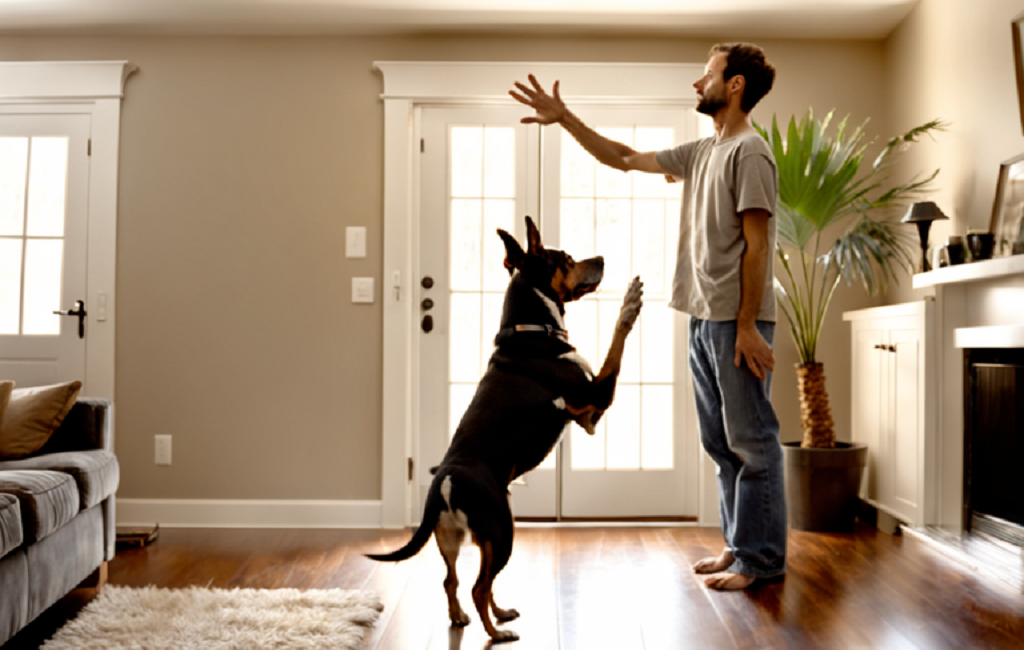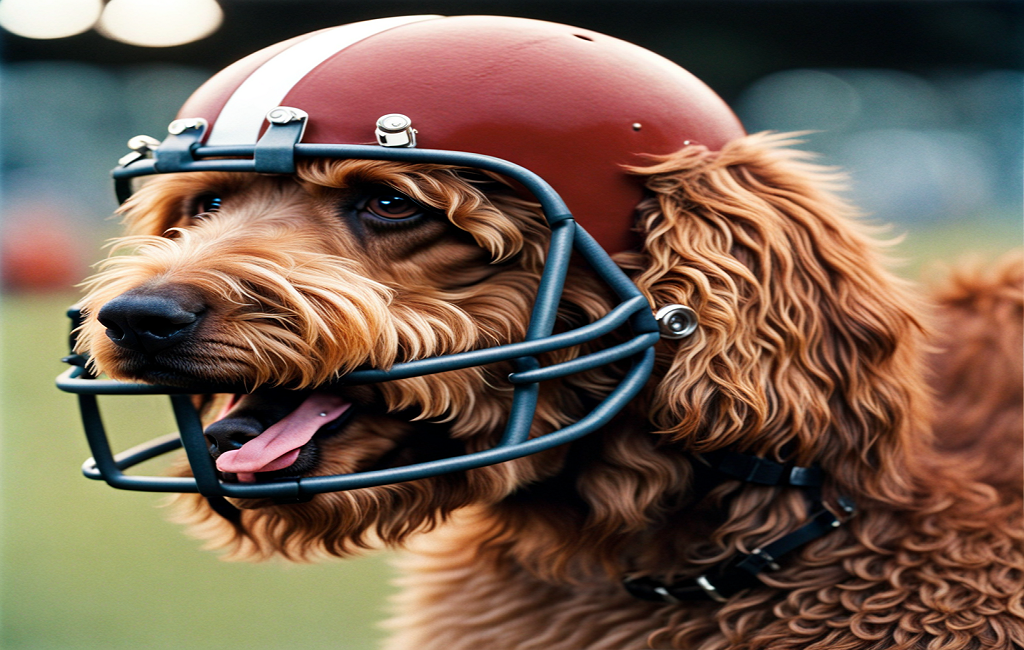Dog parents, pay attention! Are you sick of telling your animal friend to quiet down all the time? Is your dog’s constant barking driving you crazy and making a mess in your home? Now, buckle up, because we’re about to give you the best advice on how to turn your dog into a well-behaved, quiet family member. Friends and neighbors will no longer complain about the noise or have to be quiet during important calls. Get ready to learn tried-and-true methods, expert advice, and practical strategies that will finally stop your dog from barking nonstop. Our complete guide on how to teach your dog to stop barking for good will help you get back to peace and quiet.
Introduction: Dogs often have trouble with barking too much.
Introduction:
A lot of dog owners have problems with their dogs barking too much. Being around a dog that barks at everything can be annoying and even embarrassing. It’s annoying for people who live in the same house, and it can also bother neighbors and make things tense between them.

There are a lot of dog owners who have this problem and don’t know how to solve it. However, excessive barking can be managed and lessened if you train your dog well and understand how it acts.
Reasons why dogs bark too much:
Before we talk about how to train your dog, it’s important to know why they bark so much. Dogs bark to talk to people and other animals, so it’s normal for them to do it. But when it gets too much, there may be a deeper reason, like boredom, worry, fear, or behavior that wants attention.
Because of their genes, some breeds are also more likely to bark too much. Some dog breeds, like guard dogs and herding dogs, are trained to bark because it’s in their nature to do so.
What happens when dogs bark too much:
Not only does too much barking bother other people, it can also cause problems for you and your pet friend. If nothing is done, it could lead to protests from neighbors or even court action. Long-term barking can also put stress on your dog’s vocal cords and lead to health problems like laryngitis.
Additionally, persistent barking could be a sign of a deeper behavior problem that needs to be handled before it gets worse and turns into something more serious, like aggressiveness.
Training ways to stop dogs from barking too much:
Figuring out why your dog is barking too much is the first thing you should do to stop it. You can figure out what to do next by watching your dog’s behavior and figuring out what sets it off. Here are some ways to train your dog so that it doesn’t bark too much:
- When you use positive feedback: You give your dog treats when they do something you want them to do, like being quiet or listening to you. You can do this by giving them treats, praise, or time to play. For this method to work, you need to be consistent and patient.
- Techniques for distracting dogs: Dogs bark sometimes because they are bored or because they are reacting to outside triggers like other animals or noises. When this happens, giving them toys or engaging games to play with can take their attention off of it and stop them from barking.
- Desensitization: If your dog barks at certain things, like doorbells or people, you can slowly introduce these things to them without making them react.
- Training with the “quiet” command: If you want to stop your dog from barking, teaching them a “quiet” command can help. If your dog is barking too much, start by telling it “quiet” in a calm but strong voice. Give them treats and praise when they stop barking. If you train your dog over time, it will learn that the word “quiet” means to stop barking.
- Getting professional help: If you’ve tried a lot of different things and still can’t stop your dog from barking, it might help to talk to a professional trainer or behaviorist. They can look at your dog’s behavior and give you more detailed training methods that will work best for your dog.
Conclusion:
Many dog owners have problems with their dogs barking too much. This can be fixed by teaching your dog properly and understanding how they behave. Finding the reason why the dog is barking and teaching it in the right way can help reduce it. To get good results, remember to be gentle, steady, and use positive feedback.
Figuring out why people bark is important
Discovering the reason why your dog is barking is an important part of teaching them not to do it. Dogs naturally talk to each other by barking, but if they do it too much or for no reason, it can be annoying and bother your neighbors. Finding out why your dog is barking is important before you start teaching him.
- Territorial or Protective Barking: Dogs are usually territorial, so they may bark when they see a threat or stranger coming toward their area, like a person at the door or another animal walking by. They may also bark in this way when they think their owner or family members are in danger. In this case, you need to show your dog that you are the pack master and that you can handle any danger.
- Separation anxiety: Dogs with separation anxiety may bark a lot when they are left alone, and they may also do harmful things like chewing or scratching. Dogs often bark in this way when they are scared or upset because they are very attached to their owners and get nervous when they are away from them. For separation anxiety, you can train your dog by slowly extending the time you spend away from them, giving them lots of exercise and mental activity when they’re alone, and getting professional help if you need it.
- Attention Seeking Barking: Some dogs learn very quickly that barking will get them attention from their owners, whether it’s good attention (like praise or treats) or bad attention (like yelling or being scolded). To keep your dog from barking for attention, you should not praise it. Instead, teach them a better way to communicate, like sitting or pulling.
- Because they are bored or angry: Dogs that don’t get enough mental and physical activity may bark a lot to get rid of their energy. You should take your dog for daily walks and give them mentally stimulating activities like puzzle toys or training games.
- Fear or Alarm Barking: When a dog is scared, it may bark to warn others or protect itself from possible harm. This kind of barking can also be caused by loud noises, strange items, or bad memories. To stop your dog from barking out of fear, you need to boost their confidence through positive reward training and slowly introduce them to the thing that scares them in a safe and controlled setting.

- Medical Problems: Sometimes, a dog’s excessive barking is caused by a health problem, like pain, discomfort, or memory loss in older dogs. If you think your dog’s barking might be because of a health problem, you should take him or her to the vet to get a good evaluation and treatment.
You should know that some dog types are more likely to bark than others. Before taking a certain breed into your home, you should learn all about its habits and needs. Overall, figuring out why your dog barks can help you come up with a training plan that meets their needs and makes your home quieter and more peaceful.
Why good training is important for your dog’s health
A big part of being a good pet owner is training your dog. It not only makes the bond between you and your pet friend stronger, but it’s also very important for their health. Dogs need to be socialized, and the right training helps them figure out their place in the family and in the world.
Giving your dog exercise time and effort is important for their health and happiness for the following reasons:
- Encourages both physical and mental stimulation:
Being busy is something that dogs do naturally, and they need to do it to stay healthy and happy. There are times during training when they can do physically stimulating things, like running, playing fetch, or walking on a leash. Also, obedience training keeps dogs’ minds active by making them think and solve problems. This keeps them from getting bored, which can cause them to act out in bad ways.
- Makes communication and trust stronger:
Training your dog makes the bond between you and your dog stronger by building trust and making it easier to talk to each other. Dogs learn to trust their owners when they stick to the same teaching methods and follow the owner’s rules. To interact effectively with your dog, you need to know what it’s trying to say through its body language or barking. This will help you avoid mistakes or fights.
- Sets an example of good behavior:
Dogs don’t behave well on their own; they have to be taught and rewarded for it over and over again using the right training methods. During training, you can set clear rules and standards for your dog’s behavior. This will help them keep good habits and stop bad ones. This makes the dog act well and is fun to be around, at home and out in public.
- Makes things safer:
It’s important to train your dog so that they and other people are safe. In dangerous scenarios, simple behavior commands like “come,” “stay,” and “leave it” could save your dog’s life. Training your dog also makes it less likely that it will have a mistake, like running into traffic or eating something bad.
- Encourages making friends:
Dogs learn how to get along with other people, animals, and surroundings when they are properly trained. This training makes sure that your dog is comfortable around a wide range of people and situations, which makes it less likely to be scared or anxious in new places. This also lets your dog get along well with other dogs, which makes walks and trips to the dog park more fun for both of you.

- Lessens Stress:
A dog that has been trained well is calm and sure of itself. Dogs that know what is expected of them and are praised for good behavior are less stressed than dogs that don’t know what to do. For both you and your dog, a calm and stress-free dog is a happy dog.
Conclusion:
Good training is an important part of keeping your dog healthy all around. It not only keeps your pet’s mind and body active, but it also improves the bond between you and your furry friend and encourages good behavior and safety. With training, you can make sure your dog is happy, healthy, and behaves well for a long time.
First step: Making yourself the boss
Setting yourself up as the leader in your dog’s eyes is important before you can effectively deal with his barking. Dogs are pack animals, which means they look to the leaders to show them the way. Your dog will be more likely to follow your orders if they think you are a strong and sure of yourself boss.
Here are some ways to turn yourself into a leader:
- Be steady with rules and limits: Give your dog clear limits and always follow through on them. This means giving your dog penalties when it breaks the rules or acts up. Giving your dog clear rules and limits will help them understand what is expected of them because dogs like order and routine.
- Use positive reinforcement training. In this type of training, you ignore bad behavior and reward good behavior with treats, praise, or love. You can trust your dog more if you train them in this way. This makes it easier for them to see you as a good boss.
- Be calm and firm: Dogs can tell when we’re upset, so it’s important to stay calm and firm when you’re with them. Dogs can get confused and find it harder to follow your lead when you’re upset or angry.
- As the pack boss, it’s important that you show your dog how to behave the way you want them to. Show them how to stay calm by staying calm yourself.
- Use your body language. Dogs talk with their bodies, so use yours to show that you are in charge. Make sure you’re standing straight and sure of yourself. Look your dog in the eyes and use a deep, authoritative tone when you speak.
Your dog will be more likely to listen to you and follow your lead once they see you as the boss.
Step 2: Figure out why your dog is barking
Dogs bark for many reasons, like when they are scared, bored, want attention, or want to talk to you. What your dog is trying to tell you is why it is barking so that you can stop it.
Here are some common reasons why dogs bark too much:
- Not getting enough movement or being bored: dogs need to be mentally and physically stimulated to be healthy and happy. If they don’t get enough playing or exercise, they might start barking too much out of boredom.

- Separation anxiety: Some dogs may bark a lot when they are left alone because they are worried or stressed about being away from their owner.
- Fear or anger: Dogs may bark too much because they are scared of people or other animals, or they may be angry at them.
- Behavior in a territory: Dogs may bark at anyone or anything they think is invading their space, even if it’s just another dog.
- Looking for attention: Many dogs will bark to get their owners’ attention, whether they want to play, eat, or just be with everyone.
Once you know why your dog is barking so much, you can better deal with the behavior.
Step 3: Learn how to train your dog so it doesn’t bark too much
- Leave the dogs alone:
It’s important not to give in and pet your dog when they bark, whether they want attention or are just bored. Don’t pay attention to the behavior; only pay attention when they are quiet.
- Show them how to say “quiet”:
Your dog should stop barking when you tell it to “quiet” using positive feedback. When they do what you say, give them treats and praise.
- Making friends:
You can help your dog become more relaxed and less reacting to people or animals that scare or bother them by teaching them how to socialize.
- Getting more movement and brain stimulation:
To keep your dog from getting tired and having too much energy, which can cause them to bark, make sure they get enough exercise and mental activity.
- Loss of sensitivity:
It’s possible for your dog to become less reactive to certain things, like the doorbell or other dogs. You can do this through positive reward training and slow exposure.
- Get help from a professional:
If you can’t figure out how to stop your dog from barking out of fear or anger on your own, you should get help from a skilled dog trainer or behaviorist.
When working with your dog, remember to always be calm and patient. Dogs that bark too much may be hard to train, but with constant direction and the right training methods, you can help your dog learn better ways to talk.
Step 2: Techniques for positive feedback
When you’re teaching your dog, it’s important for you to know how powerful positive reward can be. With positive reinforcement, you give your dog treats when they do good things instead of hurting them when they do bad things. This makes a good learning setting for your dog and can be very helpful in stopping it from barking too much.
When you want to teach your dog not to bark, here are some good positive reward methods:
- Treats and Good Words: Giving treats and good words is the most popular way to use positive feedback. Reward your dog with their favorite treat and lots of praise whenever they are quiet and don’t bark. This will help your dog connect the action you want with a good thing.
- Clicker Training: A small device that makes a clicking sound when pressed is used for clicker training. When you give the dog a treat or praise after this click, it learns that the sound of the click means they did something right. Tell your dog “Quiet” or “Enough” along with this method when it stops barking on order.

- Changing the subject: Dogs often bark because they are bored or angry. To get their mind back on a good thing, like playing with their toys or going for a walk, is helpful in these situations. This gives them a treat for being quiet and takes their attention away from what was making them bark.
- Time-outs: Dogs need time-outs too, just like kids do! Your dog is barking too much? Calmly take them away from the situation and put them somewhere quiet and not exciting for a few minutes. This will help them calm down and teach them that yelling too much means being taken away from their family.
- Being consistent is one of the most important parts of teaching with positive feedback:If you’re teaching your dog, make sure that everyone in your family follows the same steps and rules. When you are inconsistent, it can be hard for your pet to understand what you want from them.
Step 3: Deal with the cause
Dogs that bark too much may be dealing with deeper problems like fear, nervousness, or boredom. It is important to deal with these reasons if you want to stop your dog from barking.
If your dog acts nervous or scared, you might want to try calming methods or get help from a trained teacher or behaviorist.
If you know your dog gets bored easily, make sure they get enough movement and mental activity every day. Puzzles and other interactive toys are also good options that will keep them busy and mentally sharp.
Also, you should make sure that your dog doesn’t have any health problems that could be making it bark too much.
Step 4: Keep going and be patient
It takes time and care to train someone, especially to change their behavior. Don’t give up on your dog, and remember to be constant with the way you train him.
If you use positive training methods over and over again and are patient, your dog will finally learn that being quiet gets you treats.
Ultimately, barking too much can be a bothersome behavior for both you and your dog. By doing these things, you can teach your dog to stop barking so much that the whole house is quiet. If the problem doesn’t go away, though, don’t be afraid to get help from a skilled teacher or behaviorist. The health of your dog is worth the work!
Step 5: Be honest all the time
When you’re trying to teach your dog not to bark, consistency is very important. It may seem easy, but making sure your dog always follows the rules and knows what you expect of them will make their behavior and answer to directions much better. We will talk about why continuity is important in training and how to keep it up as the process goes on.
It’s important to be consistent
Plans and routines are great for dogs. Dogs are more likely to behave well when they know what to expect from their owners. This is also true when teaching your dog: if they know that you expect them to do something, they will be more likely to do it again.
On top of that, being inconsistent can make dogs lose their way and not know what to do. This might make your dog angry or stressed, which could cause them to do bad things like barking too much.
It’s also important to be consistent with the way you speak or give orders. Using different words or phrases for the same order can make it hard for your dog to understand and slow down their learning. When people in the house deal with the dog, they should all use the same directions regularly.
How to keep things the same
- Establish clear rules: Before you start teaching the dog, make sure that everyone in the house knows what the rules are for dealing with the dog. For example, you shouldn’t give treats for bad behavior or let your dog jump on furniture.

- Stick to a plan: Dogs do well when they know what to expect each day. Make sure that your dog knows what to expect every day: meals, walks, and training.
- Use constant cues and commands: As we already said, your dog will understand what you want them to do if you use the same vocal cues and hand signs for commands. Always use the same words and body language.
- Train in the same place: Distractions should be kept to a minimum for dogs to learn best. Try to train your dog in the same place every time to keep things consistent.
- Wait: Being consistent takes time and patience. You may have to try a few things before you find the ones that work best for your dog. Once you do, it’s important to stick with them.
- Talk to other people: Make sure that everyone who plays with your dog is on board with the training plan and always using the same methods. This will keep your dog from getting mixed messages.
- When you’re trying to teach your dog not to bark: It’s important not to treat it for barking or any other trait you don’t want it to have. At first, it might seem cute or harmless, but this lack of uniformity can send the wrong message and slow them down.
When you want to teach your dog not to bark, you need to be consistent. Following these tips and being gentle will help you set clear goals for your dog’s behavior and make it much better. Keep in mind that being consistent takes work and time, but it will be worth it in the end.
How to deal with different kinds of yelling, like wanting attention, being bored, or being scared or anxious
Dogs naturally and often bark, but barking too much or in the wrong places can be annoying for owners and their neighbors. It is important to know that there are various kinds of barking, each with its own reason. You can take care of the problem and teach your dog not to bark if you know why they are doing it.
To deal with different kinds of yelling, try these ideas:
- Barking to get attention:
Dogs often bark to get their owners’ attention. Sometimes they bark just to get your attention or because they want to play. In order to stop this kind of barking:
- Be careful about giving in to your dog every time they bark.
- Do not pay attention to them when they bark; only do so when they are quiet.
- Teach your dog other things to do when they want something, like sitting or going to their spot.
Make sure your dog gets enough mental and physical activity every day so they don’t come to you for attention when they’re bored.
- Being bored Barking:
Like dogs that bark to get attention, dogs that are tired or have too much energy may bark to get it out. Dogs that need to do a lot of hard work, like herding or working breeds, often bark in this way.
To stop yelling out of boredom:
- Take your dog for longer walks or runs to get more exercise.
- Give them mentally exciting things to do, like puzzle toys or training lessons.
- To give your dog more social and physical activity during the day, you might want to hire a dog walker or sign them up for doggie daycare.
- Fear or worry Barking:
Dogs may also bark when they are scared or busy. When dogs bark like this, they often show other signs of fear, like shrinking, shaking, or hiding.
To stop yelling out of fear or anxiety:
- Find out what makes your dog scared and try to get rid of it from their surroundings.
- If you want to help your dog get over their fears, get help from a professional teacher or behaviorist.
- To boost your dog’s confidence and help it connect the trigger with good things, use positive reward.
- Don’t hit your dog when it barks out of fear; it will only make their nervousness worse.
- Barking for protection or alarm:
Dogs may bark when they think there is a threat or danger nearby. Noises, strange people, or animals can make this type of barking happen.
To stop defensive or warning barking:
- Teach your dog well-known phrases like “quiet” and “enough.”
- Make them less sensitive to the triggers by slowly introducing them to them at a low level and giving them a prize for staying calm.
- Show them that new people or animals are not dangerous by putting them in new settings little by little and praising good behavior.
- Give your dog a safe place to go, like a box or a room that is just for them, where they can go when they feel stressed.
It’s also important to remember that excessive barking could be a sign of a deeper health problem. Talk to your vet to rule out any possible health issues. To deal with screaming habits, you need to be consistent and patient. The real reason your dog is barking can be fixed with the right training and care, and they will learn better ways to talk to you.
There are training tools and items that can help you stop your dog from barking.
Products and tools for training can be very helpful in reducing your dog’s barking. These tools are made to help you and your dog with training, which will make it easier to teach them not to bark too much. This part will talk about some of the best teaching items and tools that can be used for this purpose.
- Dog collars that don’t bark:
An anti-barking collar is one of the most well-known and widely used ways to train dogs not to bark. When your dog barks too much, these bands send out a small correction signal, which makes them less likely to bark. There are different kinds of collars that stop dogs from barking, like shock collars, spray collars, and buzzing collars. When picking out the right collar for your dog, you should think about things like its size and personality.
- Ultrasonic Tools:
Ultrasonic devices are another useful tool that can help stop dogs from barking. These gadgets make a high-pitched sound that only dogs can hear, which can be annoying or distracting when they bark too much. Some ultrasound devices have remote buttons that let you play the sound whenever you need to.
- Sticks and clickers:
There are a lot of dog teachers who use clicker training to teach dogs different habits, like how to stop barking. A clicker is a small device that you can hold in your hand and press to make a clear clicking sound. Along with positive feedback, you can use it to give your dog treats for being quiet and not screaming.

- What it is:
When you want to train your dog, treats can be very helpful. When you train your dog to not bark, you can use them along with other methods, like clicker training. Only give your dog high-value treats when they are calm and quiet.
- How to Train Books and Guides:
There are many books and guides that come with useful tips and techniques for stopping dogs from barking. These tools can be especially helpful for people who are getting a dog for the first time or who are having trouble figuring out how to best meet their dog’s needs.
- Services for professional training:
If you can’t stop your dog from barking too much on your own, you might want to get help from professional trainers. They can look at how your dog acts and give you teaching methods that are specifically designed for your dog’s needs.
It is important to remember that not every tool or product will work for every dog. You must pick the one that best fits your pet’s personality and wants. Also, it’s important to use these tools in an honest and responsible way, always putting your dog’s health and happiness first.

1 thought on “The Complete Guide of How to Train Your Dog to Stop Barking”